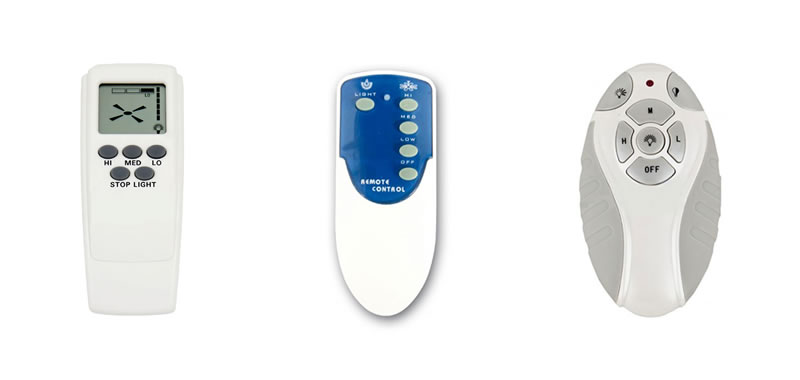Uncategorized
Ceiling Fan Remotes
Do you need a ceiling fan remote? What options are there?
Ceiling fans can be controlled in 3 different ways – pull cord, wall controls or remote controls. Remotes can be very useful in certain circumstances, but are not always necessary.
When you may need a remote
Tricky installation
Often installation may be a bit tricky – you have a concrete ceiling and another floor above so you can’t add any extra wiring or can add wiring in the ceiling but you can’t do wiring down the wall. In these cases, a remote will often make installation possible. In the first scenario, you may replace the light with a fan and light and use the existing wiring. In the second scenario, you may add wiring in the ceiling but not need to run wiring down the wall.
Bedrooms and convenience
Often remotes can be really convenient, especially in bedrooms, if you want to be able to change the speed settings without getting up!
Remote facts:
- Radio Frequency vs Infrared- These days many remotes work on radio frequency – which means they are able to be replaced if they do break down or get lost. It also means you can have several fans in one room or one house and the remotes won’t interfere with each other! Or, if you do want to them to all go on at the same time, you can set the same frequency and achieve this. Infrared fan remotes are not as easily replaced and work by pointed at the fan, so depending on how your fans are installed, you may get interference with one and another, and you usually don’t have the option of setting several to work from one remote handset.
- Remote functions – All fan remotes come with various speeds for the fan (normally 3, but some more) and an on/off button for a light in case you have a fan with a light. Some remotes also come with dimmers for the lights, and timers for the fan. Your remote options will depend on the fan you pick – please feel free to contact our sales staff if you are after something in particular and they can give you some options. A very limited range of ceiling fans also have the reverse direction function on the remote, please contact our staff for more details.
- Brackets – Most remotes come with a wall bracket so you can keep them on the wall, making it less likely to lose them!
- Fan and light controlled separately – Using a remote does not mean you will turn on both your fan and fan light at the same time! They can still be controlled separately. In fact, depending on your situation, you may be able to get your electrician to keep the light on a wall switch, and only wire the remote to the fan.
- Can any fan have a remote? YES! (pretty much.) Some fans come with remotes already included, but many come with the pull cord or wall control included. However, the vast majority of fans can have a remote added as an accessory.
- Wall control AND remote? – No! You can only have one type of control, for example if your fan comes with a wall control but you buy a remote, you will only be able to use the remote. If you buy a fan with a pull cord and you buy a remote, again you can only use the remote and it’s important not to pull the pull cord as it will put the fan on a lower setting, and all your speeds will be slower.
- DC ceiling fans – All DC ceiling fans are remote controlled only which means that they all come with a remote included and cannot be controlled by a wall control or pull cord.
**This article is written for general information. For specific requirements you may have and any questions please seek professional advice by either calling our sales consultants or consulting your electrician.**
Shop Ceiling Fans With Remote
